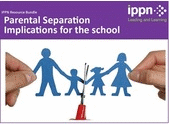Class allocation
- Published: 02 February 2022
Class allocation can be one of the most challenging issues facing principals every year. Given the major challenges presented by Covid-19, it is likely to result in heightened anxiety among staff around this issue. The principal must weigh the options carefully, bearing in mind the wishes of teachers, the needs of the school or a particular class and other information particular to a school situation which may influence decisions. The school community will need to be aware that the school leader cannot always make the decisions that staff, parents and others want, because of being bound by laws, circulars, policies procedures and information specific to the school. In establishing trust and building relationships, it will come to be known and understood that the school leader listens to them and endeavours to find solutions that are in the best interest of all. Taking time to have these conversations in terms of class allocation is important. Ultimately, it is the principal’s duty to allocate classes. No matter who seeks to influence the decisions to be made, the final say rests with the principal.
Different types of school, as well as issues such as custom and practice, classes of extraordinary size or pupil needs all point towards one conclusion - there is no perfect way of going about the process of allocating classes. There are, however, common elements that apply to every school.
- The time and effort put into the allocation of classes in a way that is transparent and accountable, is more than rewarded in terms of its benefit for overall staff, teamwork and harmony. If moving from a situation of little or no change from year-to-year, limited rotation may be all that is possible or indeed wise, within the first year or two. This year some schools are looking at staff remaining with their currently allocated class or class grouping where this is feasible. Like the implementation of any other change, gradual rather than radical implementation is often the most sustainable in the long run
- Prior to the allocation of teachers to classes, it is important to clarify how classes will be divided for the following September. In smaller/multi-graded schools and many larger schools where there is a necessity to have multi-grade classes, it is useful to consult with teachers and where appropriate to involve teachers in deciding the most appropriate division of classes
- It is advisable to have a policy of staff moving to different classes after a number of years teaching the same class level. This allows for staff to develop their own professional experience across a range of classes. However, if such a policy is not in place at this stage, it would be best to wait for the next school year to develop one in consultation with staff
- Specific consideration has to be given when the Principal is also a teacher. One of the key recommendations of The Hay Group Report on The Role of Primary Principal illustrates the importance of Teaching Principals allocating to themselves a teaching workload, which reflects the dual role of Principal and Class Teacher
- Teacher seniority and/or holding a post of responsibility does not give any staff member additional rights or priorities when it comes to the allocation of teachers to classes
- Change can help to freshen the thinking in certain areas, particularly around the implementation of new strategies. Many schools use a preference sheet where each teacher gets to select their first, second and third choice of class level. Normally the 5 categories used are Infants / 1st & 2nd / 3rd & 4th / 5th & 6th/ Support Teaching or Special Class Teaching. A class preference template is available on www.ippn.ie. This is helpful to the principal in reaching a decision. Staff moves should not be announced at staff meetings without each person present knowing the class to which they are allocated beforehand. Some staff members may be disappointed with decisions. Discuss with the teacher any of the challenges facing them and possible supports they may need in their particular situation. No guarantees can be made to any staff member with regard to class allocation in the future, as circumstances change constantly from one year to the next
- Movement among staff in terms of class allocation is important from the point of view of motivation, staff development and ensuring that contributions to policy and policy development are rooted in the broad experience of staff members. It is counter-productive to allocate the same class/class level to a staff member for prolonged periods, denying the staff member the experience to teach at another level and perhaps denying someone else the opportunity to teach the class in question
- Class allocations should be reported to the Board as a matter of information. However, the Board should not intervene in matters which are the prerogative of the principal without serious and fundamental reasons for doing so
- It may be agreed that decisions taken around staff allocation should be kept confidential amongst teachers until close to the end of the school year. This, however, is a matter to be decided by each school. Whatever arrangements are put in place, ensure that all staff are aware of and comply with the school procedure in this matter. It is a matter for each school to decide when parents and children are informed about class allocation.
Resources: https://www.ippn.ie/index.php/resources/school-policies/2334-class-and-classroom-allocation-policy



















































